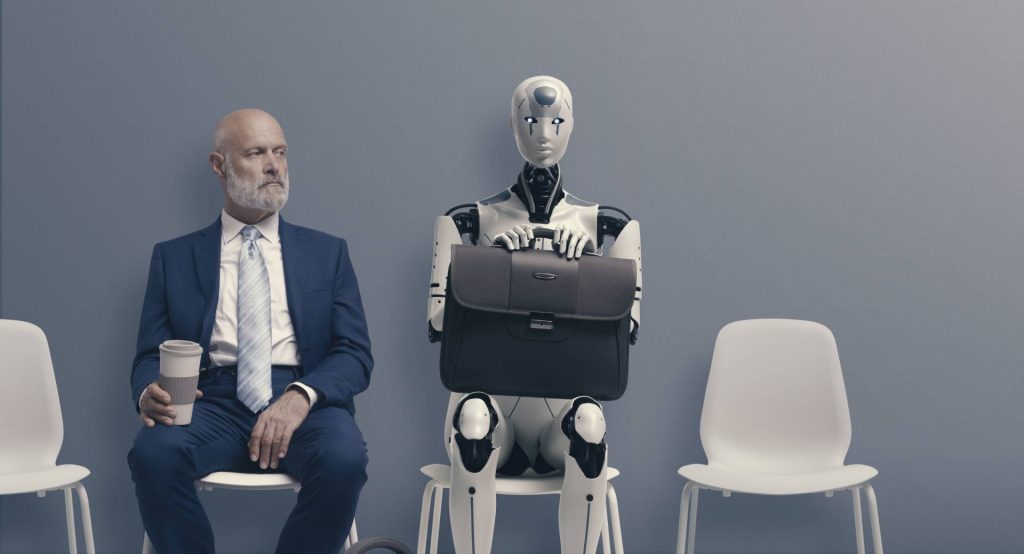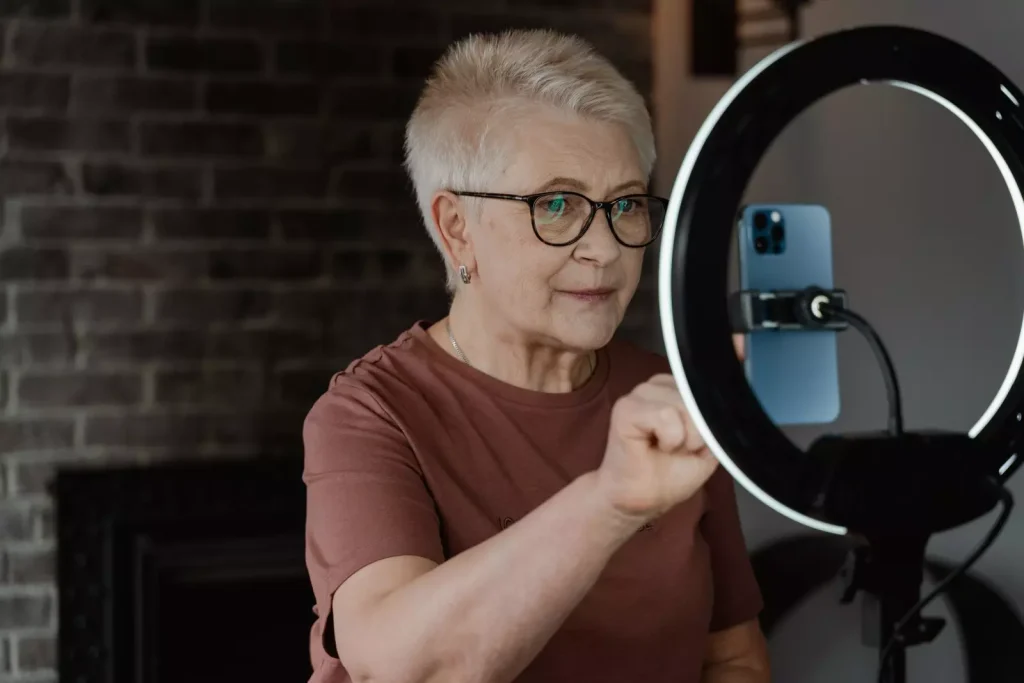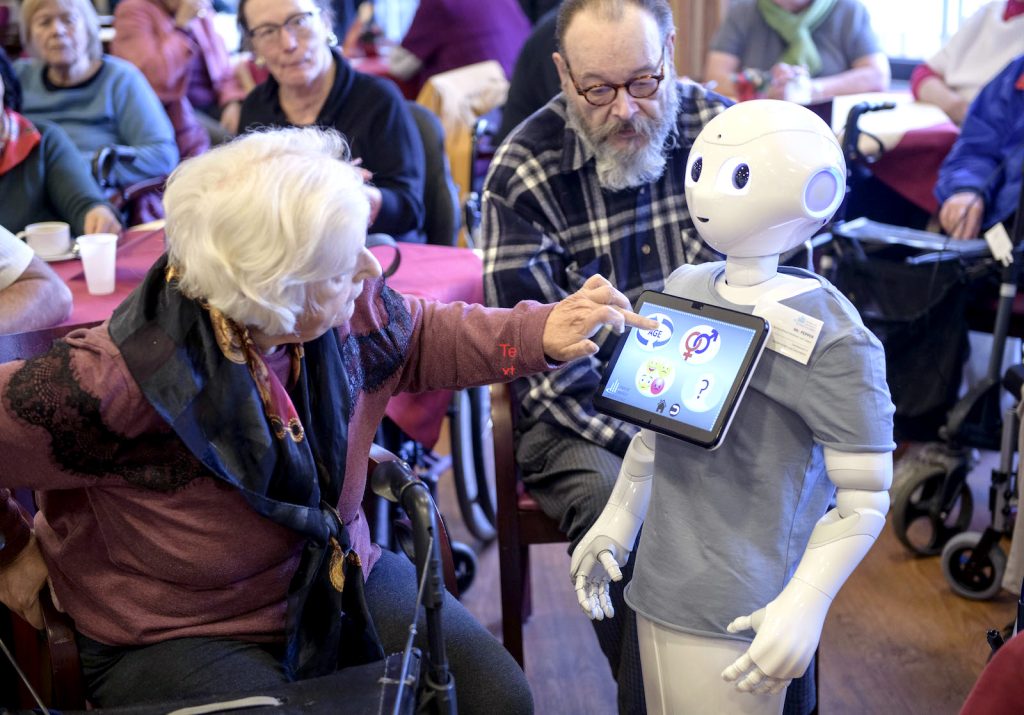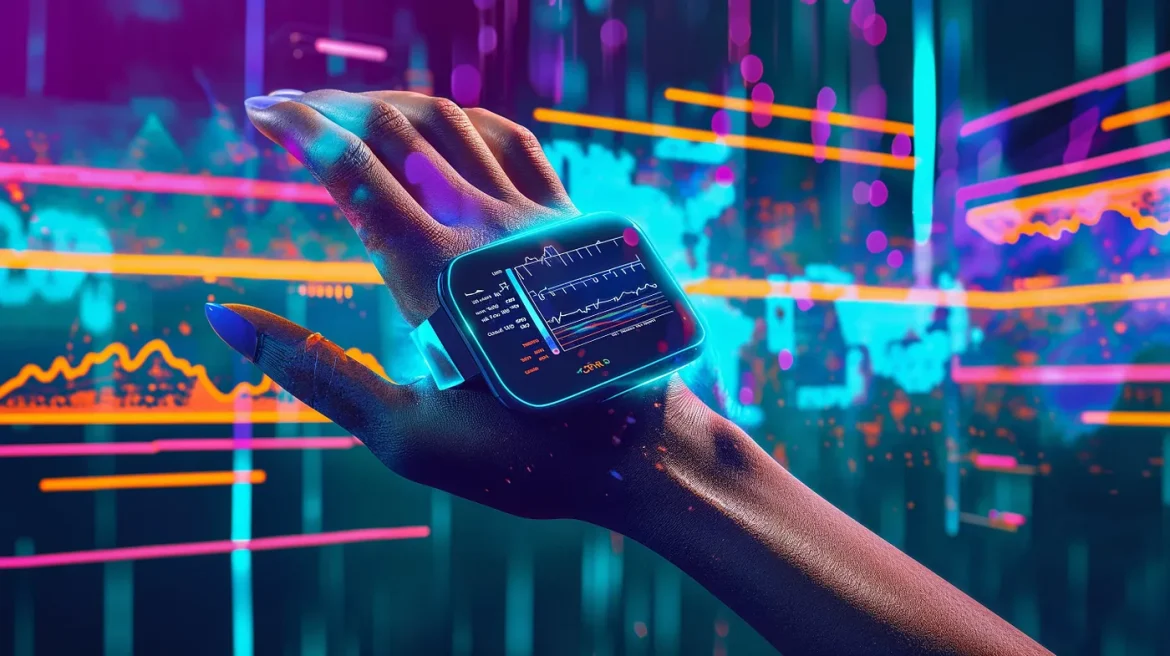As populations around the world continue to age, the demand for innovative solutions to support the elderly is growing. Technology plays a crucial role in addressing the challenges faced by aging individuals, from maintaining independence and improving health to fostering social connections. This article explores how technology is transforming the lives of older adults, the key innovations driving this change, and the future potential of tech for aging populations.

The Need for Technology in Aging Populations
The global aging population is increasing rapidly, with the number of people aged 65 and older projected to surpass 1.5 billion by 2050. This demographic shift presents several challenges:
- Healthcare Needs: Older adults often face chronic health conditions, cognitive decline, and mobility issues that require continuous monitoring and management.
- Independence: Many elderly individuals wish to maintain their independence and continue living in their own homes, but this can be challenging as physical and cognitive abilities change.
- Social Isolation: Aging can lead to social isolation and loneliness, which can negatively impact mental and physical health.
Technology has the potential to address these challenges by providing solutions that enhance health care, support independent living, and promote social engagement.
Key Innovations in Tech for Aging Populations
- Telehealth and Remote Monitoring:
- Virtual Consultations: Telehealth platforms enable older adults to consult with healthcare professionals from the comfort of their homes. This is particularly beneficial for those with mobility issues or who live in remote areas.
- Remote Monitoring Devices: Wearable devices and home monitoring systems track vital signs, medication adherence, and activity levels. These devices can alert caregivers and healthcare providers to potential health issues before they become serious.
- Chronic Disease Management: Technology assists in managing chronic conditions such as diabetes and hypertension by providing real-time data and personalized recommendations.
- Smart Home Technologies:
- Home Automation: Smart home devices, such as voice-activated assistants and automated lighting, help older adults manage daily tasks and maintain safety. For example, voice commands can control lights, thermostats, and even kitchen appliances.
- Fall Detection: Advanced sensors and wearable devices can detect falls and automatically alert emergency services or caregivers. This technology reduces the risk of injury and ensures prompt assistance.
- Medication Management: Smart pill dispensers and reminder systems help ensure that medication is taken as prescribed. These devices can send alerts to both the user and their caregivers if a dose is missed.
- Assistive Technologies:
- Hearing Aids and Vision Aids: Modern hearing aids and vision aids are equipped with advanced features that improve quality of life for individuals with sensory impairments. Hearing aids with Bluetooth connectivity and vision aids with magnification and contrast adjustment are just a few examples.
- Mobility Aids: Technology-enhanced mobility aids, such as smart walkers and powered wheelchairs, provide greater mobility and independence for those with physical limitations.
- Robotic Assistance: Robots designed to assist with daily activities, such as cleaning, cooking, and companionship, are becoming more prevalent. These robots help reduce the physical strain on older adults and provide support for various tasks.
- Social Engagement Tools:
- Social Platforms and Communication Tools: Video calling apps, social media platforms, and online communities help older adults stay connected with family and friends, reducing feelings of isolation and loneliness.
- Virtual Reality (VR): VR technology offers immersive experiences that can engage older adults in activities they may not be able to physically participate in, such as virtual travel or interactive games.
- Online Learning and Entertainment: Access to online courses, streaming services, and e-books provides opportunities for continuous learning and entertainment, keeping older adults mentally active and engaged.

Benefits of Tech for Aging Populations
- Enhanced Health and Safety:
- Early Detection and Prevention: Remote monitoring and telehealth services enable early detection of health issues and timely intervention, potentially preventing serious complications and hospitalizations.
- Improved Medication Adherence: Smart medication management tools help ensure that medications are taken correctly, reducing the risk of medication-related problems.
- Increased Independence:
- Home Automation: Smart home technologies empower older adults to manage their living environment with greater ease and control, allowing them to live independently for longer.
- Assistive Devices: Mobility aids and assistive technologies support daily activities, enhancing independence and quality of life.
- Reduced Social Isolation:
- Enhanced Communication: Social platforms and communication tools help older adults maintain connections with loved ones, reducing feelings of loneliness and improving mental well-being.
- Engaging Activities: Technology-driven entertainment and learning opportunities provide mental stimulation and foster a sense of purpose.
Challenges and Considerations
- Digital Literacy:
- Training and Support: Many older adults may lack the skills or confidence to use new technologies. Providing training and ongoing support is essential to ensure that technology is accessible and beneficial.
- User-Friendly Design: Technologies should be designed with simplicity and ease of use in mind, taking into account the diverse needs and abilities of older adults.
- Privacy and Security:
- Data Protection: The use of technology involves the collection and storage of personal data. Ensuring robust privacy and security measures is crucial to protect sensitive information from breaches and misuse.
- Consent and Control: Older adults should have control over their personal data and be informed about how it is used and shared.
- Cost and Accessibility:
- Affordability: The cost of technology and associated services can be a barrier for some older adults. Efforts to make technology affordable and accessible are necessary to ensure equitable benefits.
- Infrastructure: Access to reliable internet and technology infrastructure is essential for the effective use of tech solutions. Addressing gaps in infrastructure is important for widespread adoption.
Future Trends in Tech for Aging Populations
- Artificial Intelligence (AI) and Machine Learning:
- Predictive Analytics: AI and machine learning will enhance predictive analytics, enabling more accurate forecasting of health issues and personalized care plans.
- Smart Assistants: AI-powered virtual assistants will become more sophisticated, providing personalized support and responding to a wider range of user needs.
- Wearable and Implantable Technologies:
- Health Monitoring: Future wearable and implantable devices will offer even more advanced health monitoring capabilities, including continuous glucose monitoring and advanced cardiac health tracking.
- Enhanced Integration: Wearables and implants will integrate seamlessly with smart home systems, providing a holistic approach to health and safety management.
- Collaborative Platforms:
- Integrated Care Solutions: Collaborative platforms will enable better coordination between healthcare providers, caregivers, and family members, improving the overall quality of care and support.

Conclusion
Technology has the potential to significantly improve the quality of life for aging populations by enhancing health care, supporting independent living, and promoting social engagement. As innovations continue to evolve, the focus will be on making technology more accessible, user-friendly, and effective. By addressing challenges and leveraging emerging trends, tech can play a transformative role in supporting older adults and ensuring they lead fulfilling, independent lives. The integration of technology into the lives of aging individuals not only addresses their immediate needs but also contributes to a more inclusive and supportive society.


